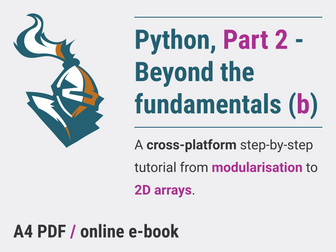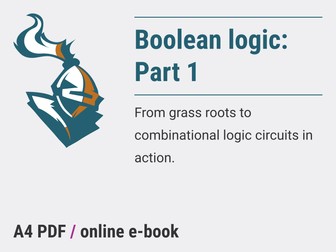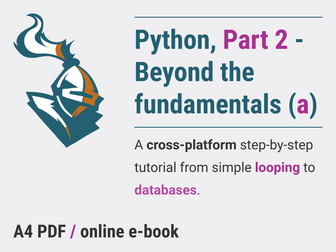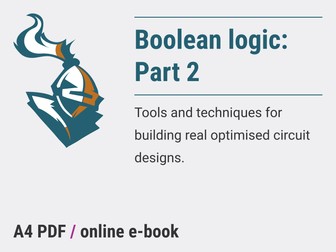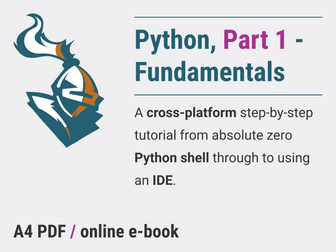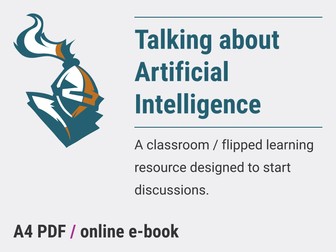
Python, Part 2: Beyond the fundamentals (b)
This resources continues on from the beginner e-book, and takes the beginner step-by-step through the next steps in the rite of passage to becoming a bonafide Python coder.
It relates to many basic learning outcomes such as:
Programming…
I can code algorithms which use local and global variables in functions and subroutines (methods).
I understand and adhere to the Single Responsibility Principle when writing code.
I can explain the benefits of, and write algorithms and code which uses subroutines (methods).
I write programs that use pre-existing (built-in) libraries.
I can code algorithms which use two-dimensional (collection/container) data structures for modelling simple 2D lookup tables.
